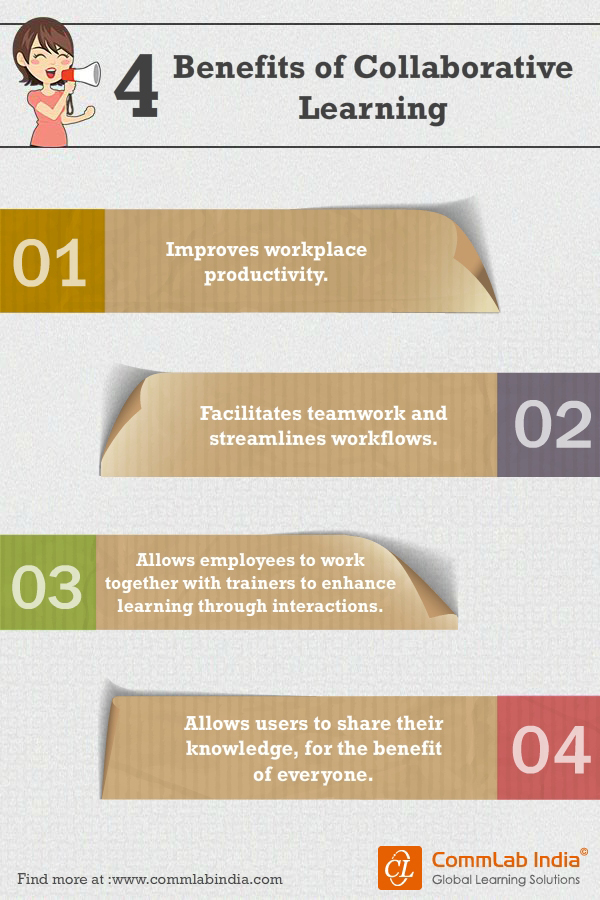
The Benefits of Collaborative Learning for Better Results

The Power of Collaboration: Unlocking Better Results Through Shared Learning
In the modern world, where information is readily available and innovation is the driving force, the traditional model of individual learning is increasingly outdated. Collaboration, the act of working together towards a common goal, has emerged as a powerful catalyst for achieving better results. Collaborative learning, a pedagogical approach that emphasizes shared responsibility and active participation, has become a cornerstone of effective education and professional development.
Beyond the Textbook: The Multifaceted Benefits of Collaborative Learning
The benefits of collaborative learning extend beyond simply achieving a higher grade. They encompass a spectrum of positive outcomes, impacting not only academic performance but also critical thinking skills, social-emotional development, and overall well-being.
1. Enhanced Learning Outcomes:
- Deeper Understanding: Collaborative learning encourages students to actively engage with the material, explain concepts to each other, and challenge each other's perspectives. This process leads to a more profound understanding of the subject matter, fostering deeper retention and application.
- Improved Problem-Solving: By working together, students learn to approach challenges from multiple angles, brainstorm solutions, and collectively arrive at a more robust and effective outcome. This fosters adaptability and resilience, vital skills in a constantly evolving world.
- Increased Motivation and Engagement: The social aspect of collaborative learning creates a more engaging and motivating environment. Students feel a sense of ownership over their learning journey, leading to increased participation, enthusiasm, and a greater willingness to go the extra mile.
2. Development of Essential Skills:
- Communication and Collaboration: Collaborative learning provides a platform for students to practice effective communication, active listening, and conflict resolution. They learn to articulate their ideas, consider diverse perspectives, and work effectively as a team, skills crucial for success in both academic and professional settings.
- Critical Thinking and Decision-Making: Collaborative learning fosters the development of critical thinking skills. Students learn to analyze information, identify patterns, evaluate arguments, and arrive at well-informed decisions. This ability to think critically and solve problems effectively is invaluable in any field.
- Emotional Intelligence and Social Awareness: Working in a group requires students to develop empathy, understanding different viewpoints, and navigating social dynamics. This process enhances their emotional intelligence and social awareness, preparing them for successful interactions with others.
3. Fostering Inclusive and Supportive Environments:
- Building Stronger Relationships: Collaborative learning promotes social interaction and builds stronger connections between students. It creates a sense of community and shared purpose, fostering a more positive and supportive learning environment.
- Embracing Diversity: Collaborative learning embraces diverse perspectives and encourages students to learn from each other's unique experiences. This fosters inclusivity and promotes a deeper understanding of the world around them.
- Promoting Lifelong Learning: By experiencing the benefits of collaboration, students are more likely to adopt a collaborative mindset throughout their lives. This empowers them to seek out opportunities for continuous learning and engage in a spirit of continuous improvement.
Implementing Collaborative Learning: A Practical Guide
While the benefits of collaborative learning are undeniable, it's crucial to implement this approach effectively to maximize its impact. Here are some key considerations:
- Defining Clear Goals and Objectives: Establish clear goals for each collaborative activity, ensuring that they align with the learning objectives.
- Facilitating Effective Group Dynamics: Create a conducive environment for effective group work by fostering communication, establishing clear roles and responsibilities, and providing regular feedback.
- Utilizing a Variety of Collaborative Strategies: Employ a range of collaborative activities, from peer tutoring and group projects to online discussion forums and problem-solving simulations, to cater to diverse learning styles and keep students engaged.
- Providing Scaffolding and Support: Offer appropriate scaffolding and support to help students navigate the challenges of collaborative learning, particularly for those who may need extra assistance.
- Assessing Individual and Group Contributions: Develop methods to assess both individual and group contributions, ensuring that all students are held accountable for their learning and participation.
Collaborative Learning: A Catalyst for Transformation
The future of learning lies in harnessing the power of collaboration. By embracing collaborative learning strategies, educators and organizations can create environments where individuals thrive, knowledge is shared, and innovation flourishes. From classrooms to workplaces, the benefits of collaborative learning are undeniable, leading to enhanced results, improved skills, and a more interconnected and empowered society.

